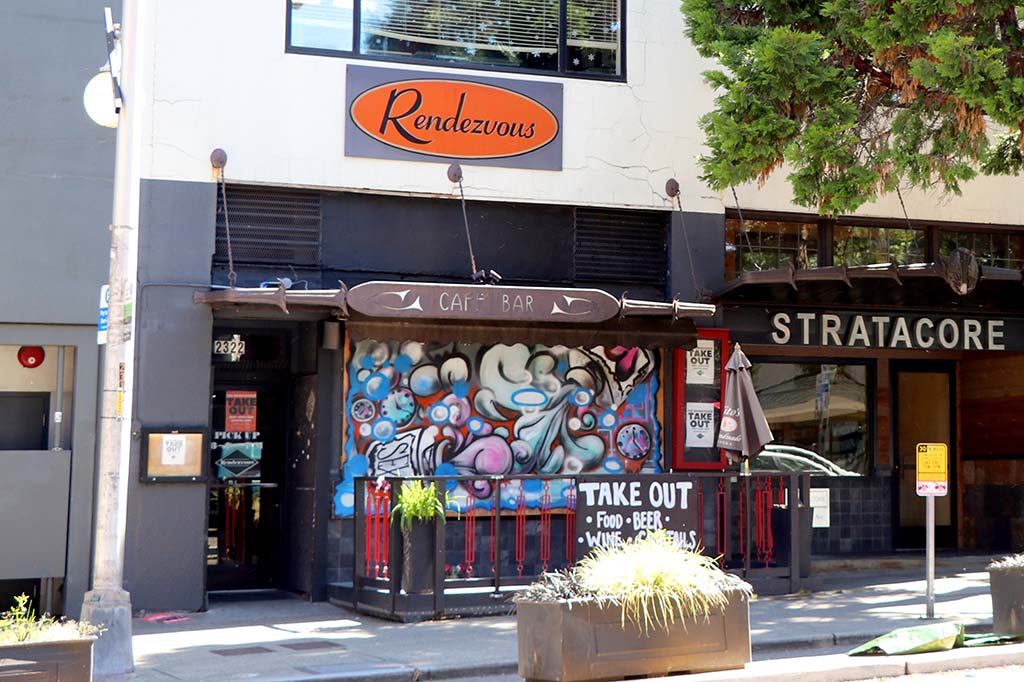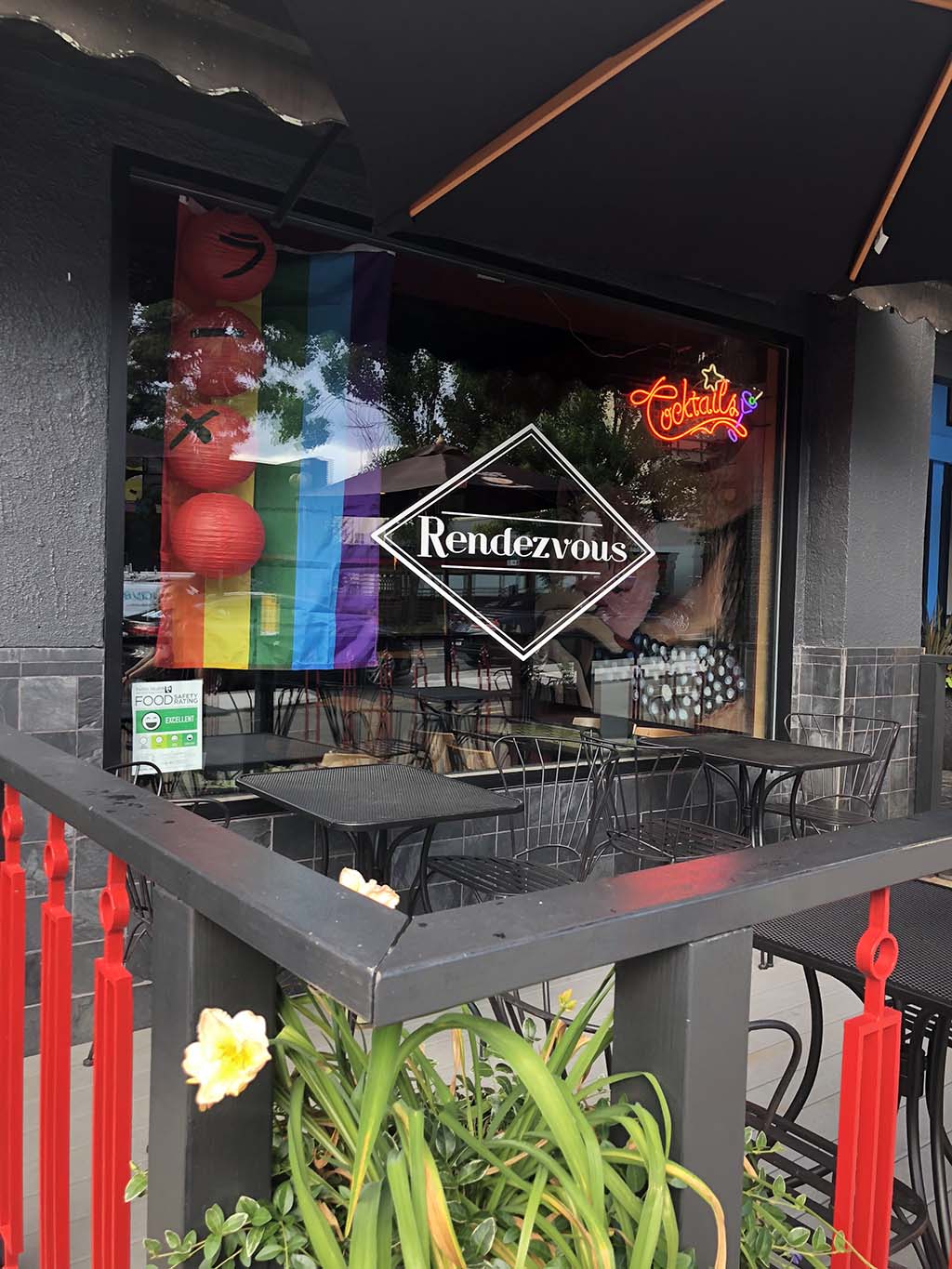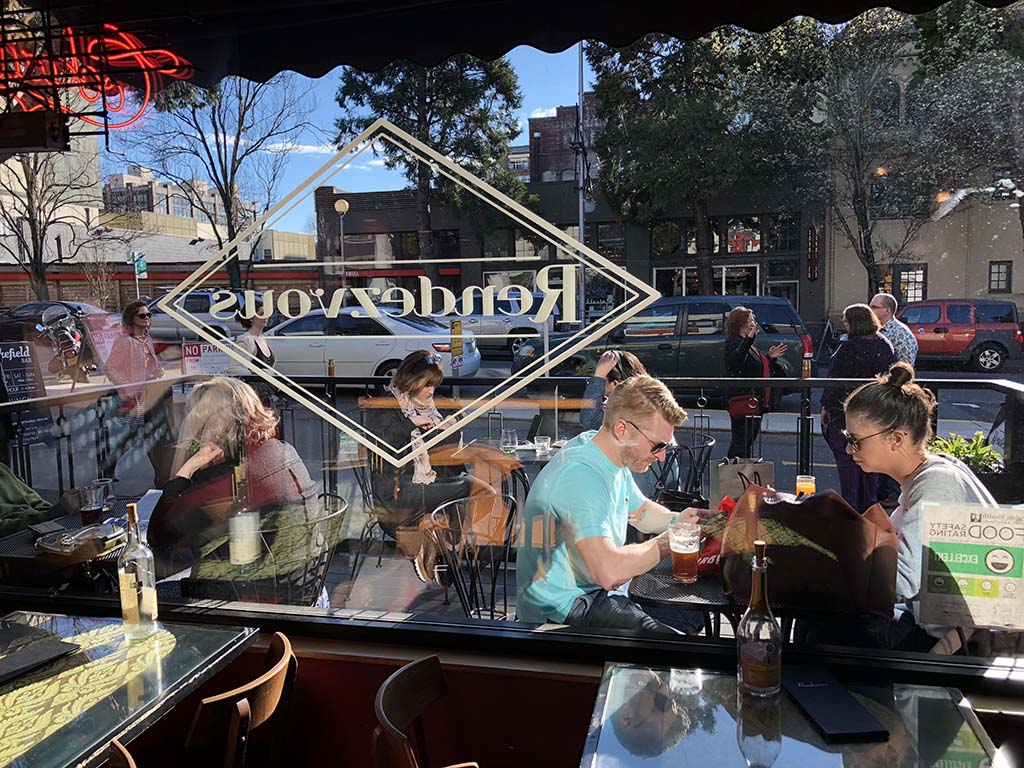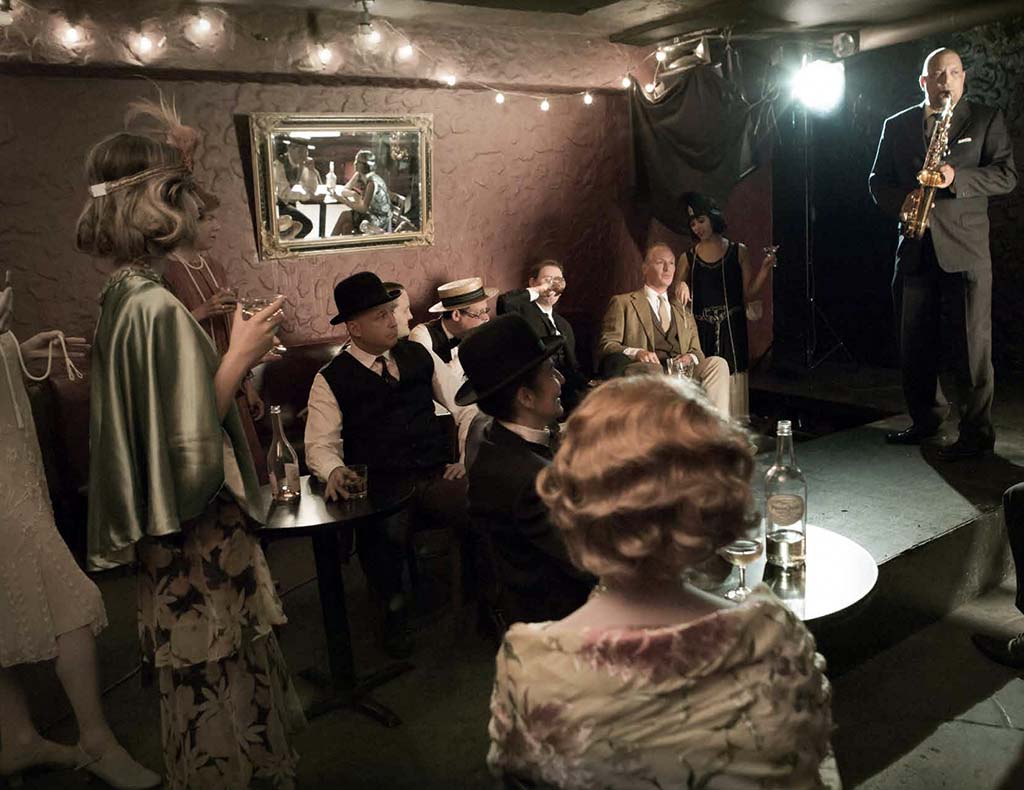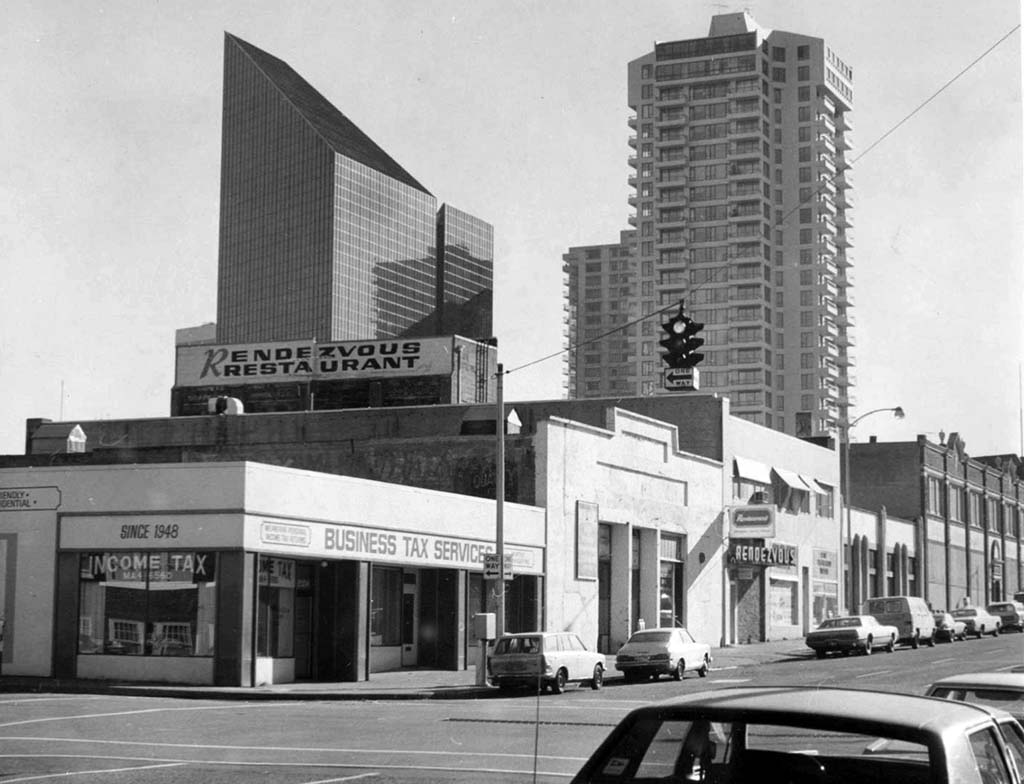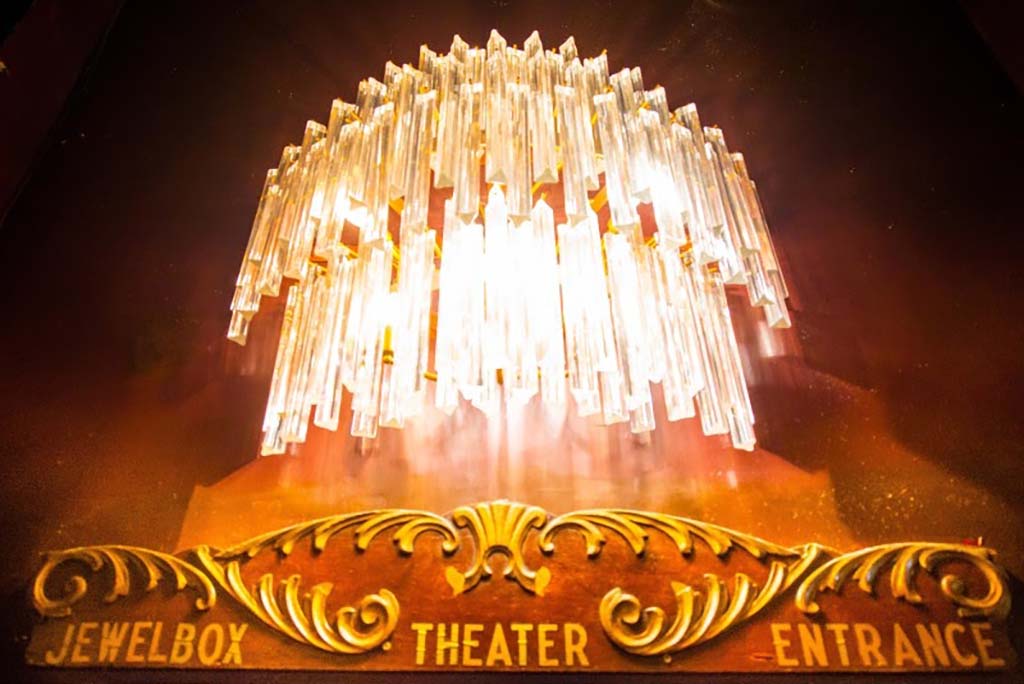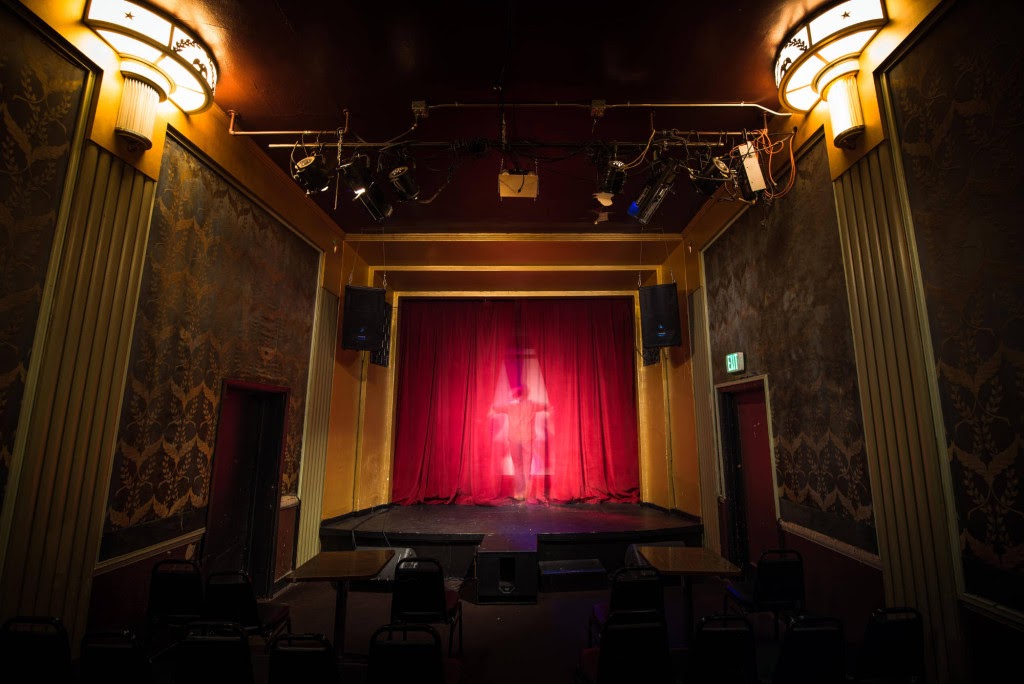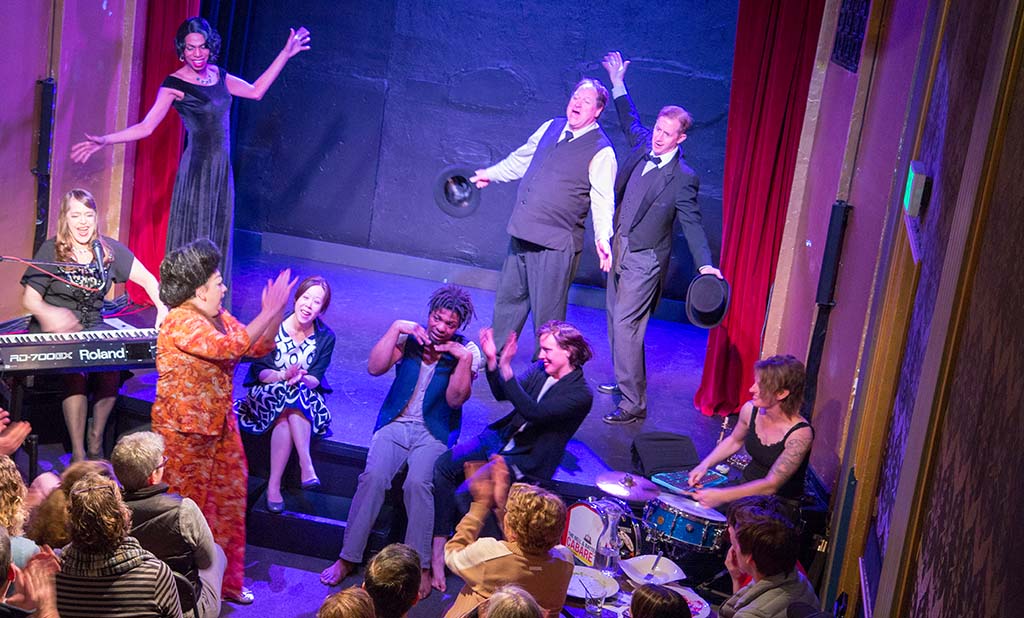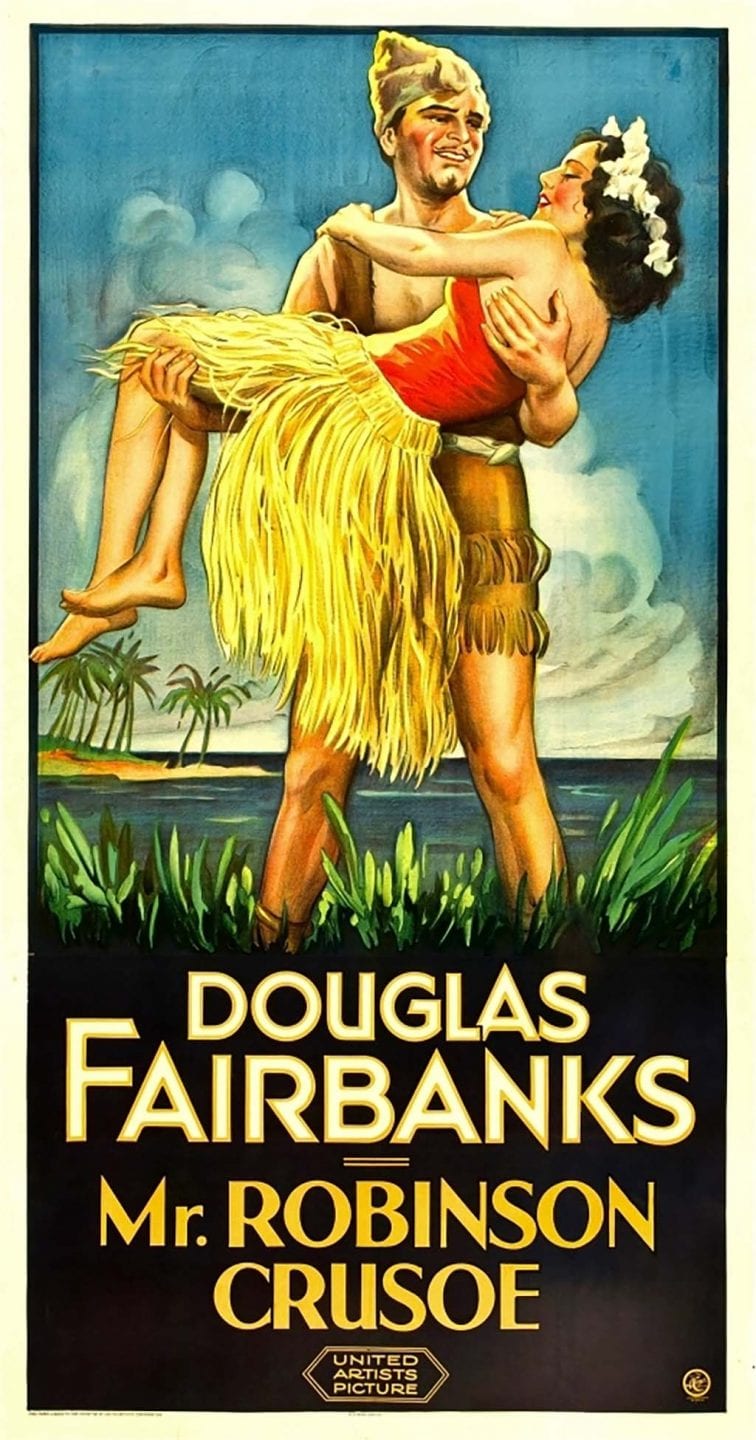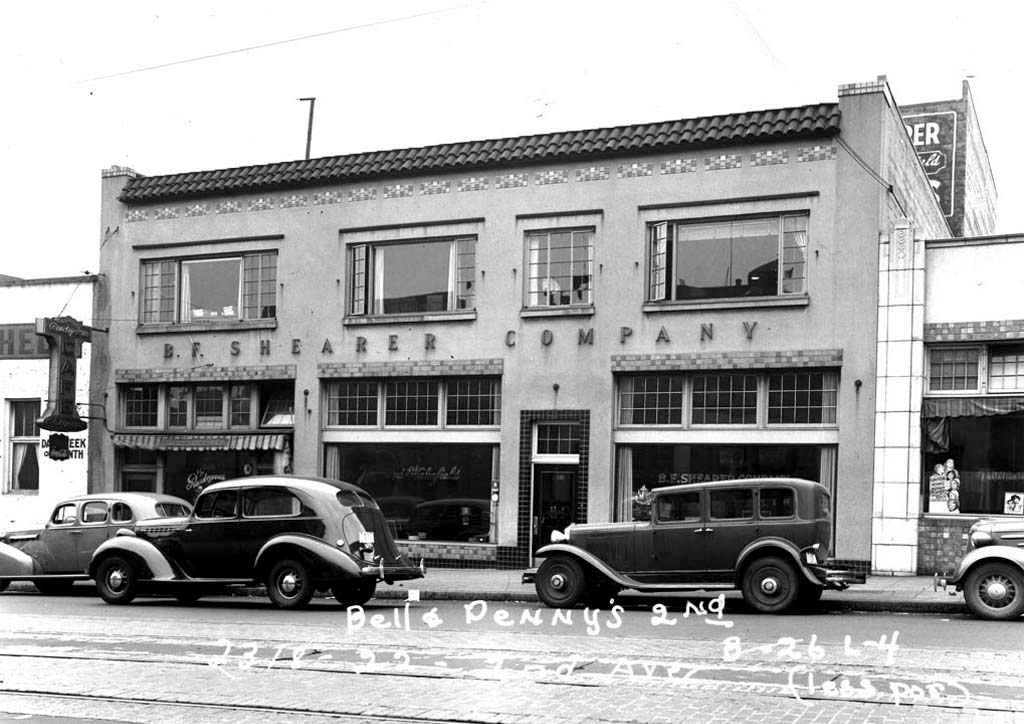Jewel Box and Rendezvous
2316 and 2322 2nd Avenue
-
Jewel Box and Rendezvous
2316 and 2322 2nd Avenue
2316 and 2322 2nd Avenue
As loudspeaker systems emerged in the 1920s, the silent-movie era quickly morphed into the “talkie” era of films with soundtracks — and the theater industry boomed. In 1926, B. F. Shearer founded his namesake B. F. Shearer Company in Seattle to supply theaters with furnishings including carpets, seats, drapes, stage curtains, and lighting. Shearer’s office was in a new building at 2318 2nd Avenue, at the center of Seattle’s Film Row district. His factory — which included a woodshop, electrical shop, research library, and a multi-story tower for manufacturing stage curtains — took up much of the block. The Seattle Times reported that Shearer built up a workforce that included “artists, designers, cabinetmakers, scenery painters, upholsterers, architectural decorators, precision mechanics, seamstresses, and drapers.”
Film Row was a beehive of entertainment industry activity, with much of it buzzing around two businesses adjacent to the factory. One was Shearer’s own Jewel Box Theater at 2316 2nd Avenue, which was designed by Seattle architect Bjorn Moe. It was a 70-seat Art Deco gem that opened in 1932. Similar in function to the many other private screening rooms along Film Row, the venue was where film distributors could preview new movies for theater managers. As an added feature during Prohibition, there purportedly was an illicit speakeasy in the basement. By the 1970s the Jewel Box was the last surviving theater along Film Row.
Another attraction was next door at the Rendezvous Café, where movie business bigwigs could meet, eat, drink, and strike deals. Locals lingered trying to spot movie stars, and newspaper reporters trafficked in gossipy stories. Owner George Blair sold the Rendezvous after World War II, famed architect B. Marcus Priteca handled a remodel, and a Vienna-trained chef was brought in to upgrade the menu. By 1987, and under new ownership, rock bands gained access to basement rehearsal spaces, and the renamed Jewelbox began hosting shows. Both the Rendezvous and the Jewelbox became hangouts for the flannel and Doc Martens crowd. New ownership took over both businesses in 2002, remodeled once again, and then many years of fun commenced. The Rendezvous remains a popular nightspot, while the Jewelbox, home to Seattle’s burlesque revival, is treasured for its live concerts, films, comedy, karaoke, and magic shows.
Head back up 2nd Avenue to Bell Street and go left. Walk two blocks to our next stop, the Franklin Apartments on 4th Avenue.
